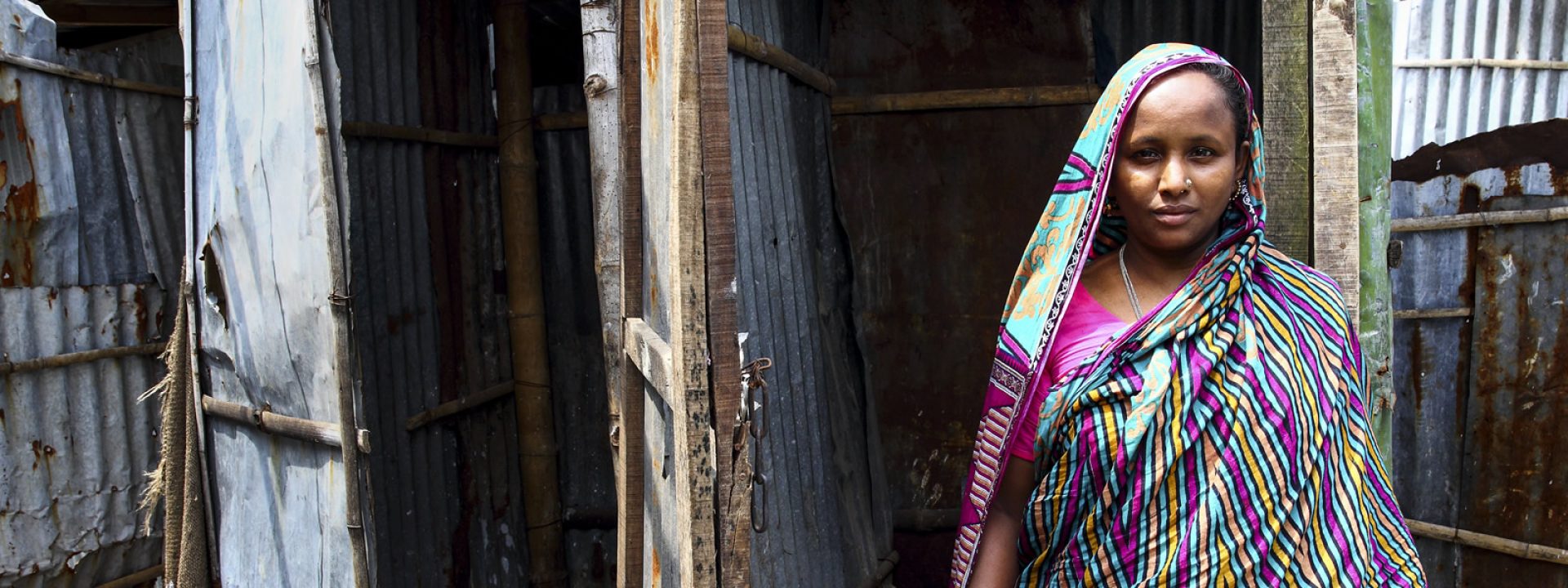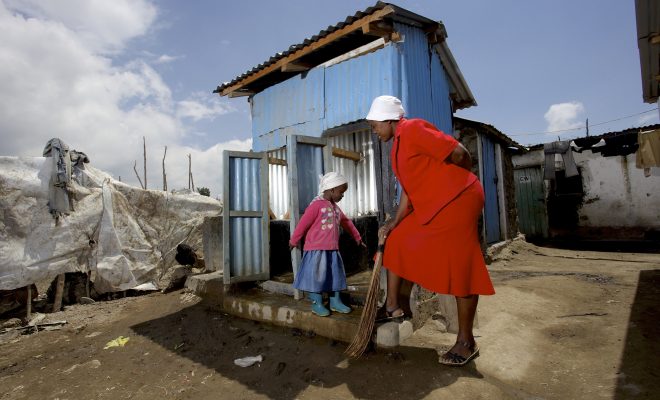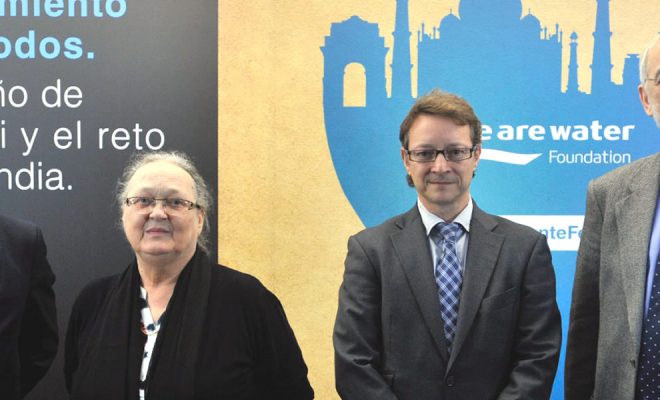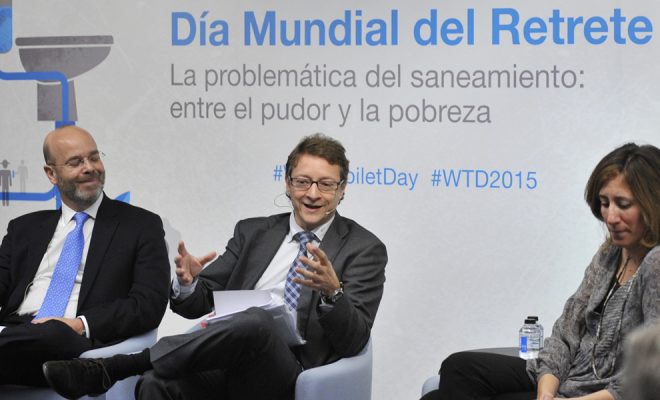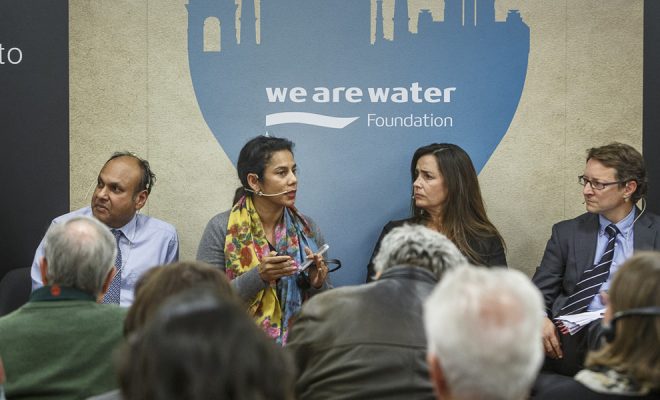The lack of sanitation is the most serious hygiene problem faced by mankind. Apart from the indignity implied in living without a toilet, this lack is the permanent cause of all kinds of diseases, high infant mortality, insecurity for women, school absenteeism and faecal contamination of water.
According to United Nations, nowadays 2.5 billion people do not have access to improved sanitation and around 1 billion people defecate in open air.
What kind of solution could end this scourge? The problem is complex. Sanitation is defined as the range of facilities that allow the elimination of waste generated by human activity in an effective, hygienic and environment-friendly way. If we take a look at these facilities in the bathrooms of our own homes, we will see there are three key elements: the supply of running water, the toilet and the sewage system. One billion people that defecate in open air do not have a toilet in their homes, very few of them have running water and almost none have access to a sewage system.
The challenge of reinventing latrines
How is it possible to imagine that anyone may have hygienic and sustainable toilets without running water or sewage systems? This question led the Bill & Melinda Gates Foundation to launch the project Reinvent the Toilet Challenge (RTTC) in 2011, with the aim of creating an independent toilet unit that would not need an external water supply or access to the sewage system or a connection to the mains. Initially the new toilet had to cost five cents ($ 0’05) per person and day, and once implemented, it had to reach a cost of only once cent ($ 0’01).
The foundation of the Gates couple launched a scholarship competition that involved universities and design teams from around the world. One of the award winners was RTI International, an independent non-profit institution that provides research and technological development services to governments and institutions worldwide with the aim of improving human condition. The Roca Design Center started collaborating with RTI in the development of the user interface, that is, the ceramic plate of the latrine and the water discharge system.
The We Are Water Foundation supported this project since its very beginning as the achievement of its goals would mean a tremendous step forward in the fight against the lack of basic sanitation in the world: to obtain an autonomous toilet with a sustainable implementation in the world´s poorest areas.
Much more than just a toilet
The project by RTI International is based on the development of a latrine that goes beyond the objectives of RTTC. It is an installation that transforms human waste into biofuel and disinfected non-potable water. We can see a diagram of how it works in the following sketch:
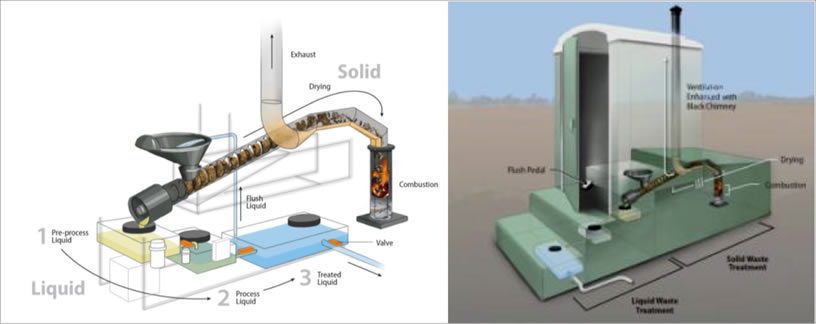
It is an entirely autonomous unit that separates solid and liquid waste by means of a worm drive. The faeces dry up while being transported by the worm drive and they end up in a tank or an oven to obtain thermal energy used both to dry the waste and to obtain electricity. This electricity is used to treat the liquids and turn them into disinfected non-potable water that is used to clean the latrine. The system therefore generates its own energy that can be reinforced with solar panels.
The Roca Design Center develops the squatting pan so that it works with only one and a half litres of water per flush, providing a barrier for odours. It is manufactured in vitreous china to ensure the maximum hygiene, cleanliness and durability, and it is complemented by a plastic flush cistern designed to offer a complete solution.
The system is designed to provide service to a small village with 12 or 15 families and several prototypes are being tested in India as part of the SWACHH Bharat program, which aims to end open air defecation by 2019 (see the presentation of the program at the Roca Barcelona Gallery).
This type of latrine involves the development of units that, apart from improving the hygienic and social conditions, may provide an extra benefit to the community as it can take advantage of the waste that had previously condemned it to unhealthiness.
The challenge of this project is to find the viability of the manufacturing of the units. The applied technologies are sophisticated and it is not easy to establish production chains that keep costs at a desirable margin. Although technology itself is not always the solution, in this case it tells us in which direction to advance.


